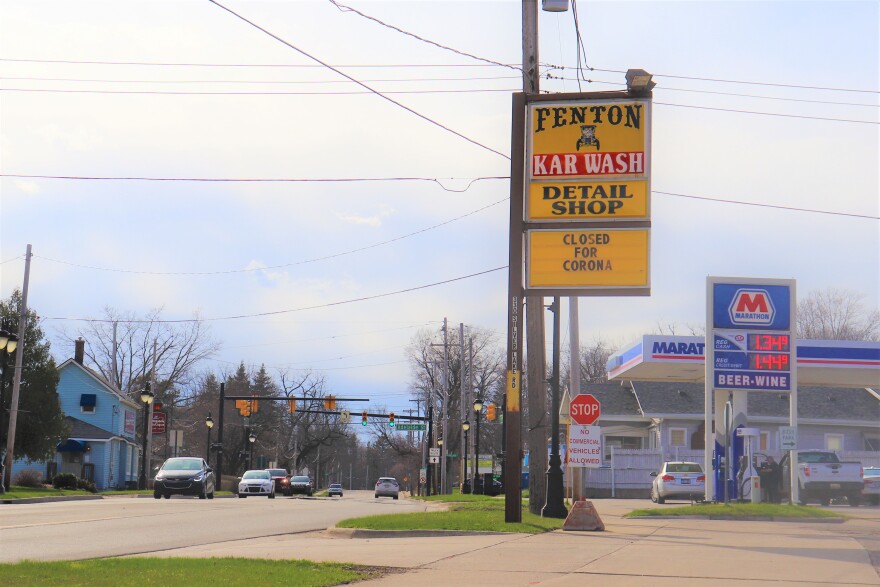The Small Business Administration (SBA) is targeting businesses owned by women, veterans, people of color and businesses in some rural communities with the re-launch of a massive loan program intended to essentially provide businesses a lifeline of free money to survive the pandemic.
Monday and Tuesday, first-time Paycheck Protection Program borrowers working with specialized community financial institutions can begin processing the forgivable small business loans. More lenders will be able to join in the program in the coming days.
The SBA designed a tiered-re-opening of the PPP with the intent to prioritize providing access to capital in “underserved communities” – from rural areas to women, minority and veteran-owned businesses.
“We really want to make sure that we’re uplifting our smallest of the smallest businesses, [like] minority-owned businesses,” said Small Business Administration Great Lakes Regional Administrator Robb Scott. “[Businesses] who are at a disadvantage that, around the first round of PPP, they didn’t have a relationship with a financial institution.”
The Paycheck Protection Program (PPP) was created to help small businesses pay workers, and cover other costs, to survive the economic downturn caused by the coronavirus. The PPP has been dormant since August, but starting this week a new pot of money is available to qualifying small businesses.
Current funding for the PPP made up nearly a third of the $900 billion coronavirus economic stimulus package Congress passed in December. There’s $284 billion in forgivable small business loans available.
Through August 8, 2020, more than 128,000 Michigan businesses (that’s more than approximately one in seven small businesses statewide) had been approved for potentially forgivable PPP loans worth more than $16 billion.
Small business advocates and SBA officials say there’s pent up demand for more relief.
“There are certain industries that I think nearly universally businesses will qualify [for a PPP loan],” said Brian Calley, former Michigan Leitenant Governor and current President of the Small Business Association of Michigan. “And I think for many of those businesses, this will literally be the difference between making it and not making it.”
In the initial round of PPP funding, relatively larger small businesses, and those with previously established banking relationships, were able to dominate the first wave of PPP funding. In the early days of the pandemic there were controversial headlines when businesses like the Los Angeles Lakers were approved for PPP loans (they eventually gave the loan back). Scott says instances like this were rare, and today the national average PPP loan amount is close to $80,000, which he says indicates that smaller businesses are taking advantage of the forgivable loans.
Among the changes to the PPP in the law passed at the end of last year, while most businesses can borrow a maximum amount of 2.5 times their average monthly payroll in a PPP loan, restaurants can now borrow up to 3.5 times their average monthly payroll. The maximum loan amount is lower now, and borrowers have to prove they’ve suffered a revenue loss to qualify for the PPP.
“I think there’s a much better chance that the money will make it to where it’s intended to be and that [funding] won’t run out so quickly like it did the first time it was introduced in 2020,” Calley said.
All PPP borrowers are required to spend 60% of the loan on payroll expenses. The remaining 40% can be used to cover a wider array of expenses. Borrowing businesses can pay rent, and/or use the PPP to pay for PPE for their business and employees, without losing loan forgiveness eligibility.
Some PPP borrowers will be eligible for a second PPP loan, if they can show they’ve suffered a 25% drop in revenue for any fiscal quarter of 2020 when compared to 2019.
Will outreach to "underserved communities" work?
The PPP was always supposed to prioritize businesses from “underserved or rural areas” where it might be challenging for borrowers to get access to capital. According to NPR, lawmakers originally set aside $30 billion in PPP funding for smaller lenders, partly with the intent to help minority-owned small businesses. A May, 2020 report from the SBA’s Inspector General said there was no evidence these businesses were prioritized.
Rob Scott says in his Great Lakes Region, SBA officials did make efforts to contact organizations in underserved communities to work across networks to spread information about how to apply for the PPP.
“It’s kind of like all hands on deck to use as many resources, as many platforms as possible to reach them,” said Scott. “It’s ultimately on that small business owner to educate themselves in order to find the resources. We are here.”
Business owners can find the latest guidance, and PPP application information at sba.gov/PPP.
The SBA says outreach to these groups of business owners is a priority now, and the reason for the tiered re-opening prioritizing first-time borrowers working with community financial institutions, specialized lenders that typically have lower lending limits.
No one knows how much of the money from prior rounds of PPP funding went to business owners of color, women entrepreneurs and other businesspeople in underserved communities. It’s voluntary for PPP borrowers to disclose demographic data about themselves, and Scott says, against the law for the SBA to require that information from borrowers.
With the re-opening of the PPP this week, SBA Administrator Carranza released guidance detailing the steps the SBA is taking to prioritize those underserved communities now.




